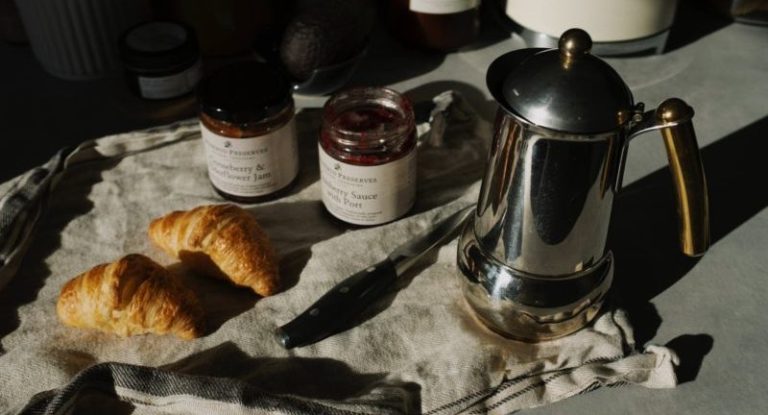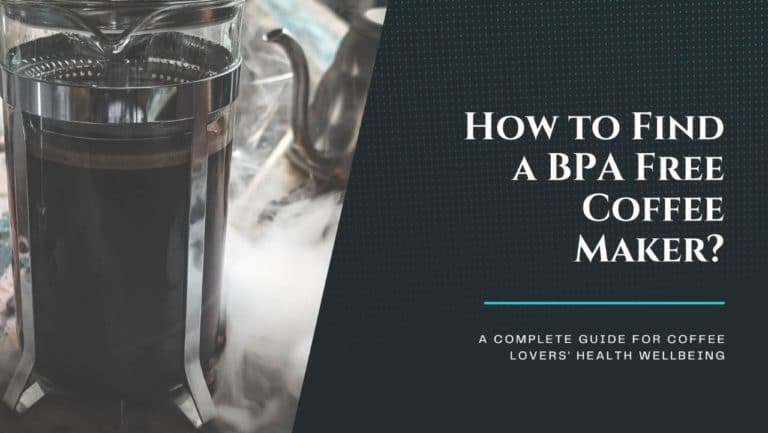Ask 5 Questions to Answer What To Look for In an Espresso Machine: The Ultimate Buying Guide for 2022
Coffee is a staple of life, but it can be hard to get a quality cup of coffee when you’re on the go. If you’re looking for a new espresso machine to use at home or in your business, this article is for you. We’ve assembled some essential tips on What To Look for In an Espresso Machine and avoid common traps that might leave you with less-than-ideal results.
TABLE OF CONTENTS
What To Look for In an Espresso Machine
Take a screenshot of what I am going to say to you now. Ask Five questions before you decide to buy an espresso machine. I have consulted baristas, forums, and user feedback to formulate those questions. You are going to win for sure!
- What is the purpose of your espresso machine?
- What is your budget?
- What types of espresso quality do you want?
- Does the espresso machine have any service support?
- Is it too challenging to meet the installation requirements?
Here we will explain every detail to solve the queries. For further details you can read these two articles:
- Best Commercial Espresso Machine for Small Coffee Shop: The Ultimate Strategy Of 2021
- Top 5 Best Espresso Machine under 500 with Grinder: The Ultimate Review of 2021
When choosing an espresso machine, consider how much you’d like to spend, how much space you have available, and what kind of coffee you’re most interested in brewing. Espresso machines range in price from $100 to $10,000, depending on features and the quality of the machine.
Many offer automatic or semi-automatic settings, grinder types, and different espresso flavors like chocolate, milk, and pineapple. Sorting through the options can be stressful, but the key is to make an informed decision or find a good jumping-off point for your budget.
Try to figure out whether you prefer a splash pattern, back to front (BBF) brewing, single-origin beans, or direct-style coffee.
If you can, research which stores stock the best options nearby. Furthermore, for an easy workout, trip down your neighborhood to a nearby coffee shop for authentic home espresso.
In addition to a fast, rewarding taste that you can inhale and feel throughout your entire day, espresso machines deliver a fluid interface in which you can watch what’s going on right in front of you. It allows you to ensure the right beans are being ground and even watch as the machine’s steam-powered burr grinder bounces beans around out of the steam until they’re the right size and shape for brewing.
Bonus: If you want an even more interactive experience, invest in an instant brew coffee table. Similar to an espresso machine’s drip tray, you can use the instant brew coffee table to keep track of exactly when each batch of coffee is ready. While home espresso isn’t as typical as it was a few years ago, it isn’t completely unheard of.
Starbucks and Dunkin’ Donuts are two great examples of places that offer it, but don’t discount Baskin-Robbins or your neighborhood corner deli. A few years ago, Dunkin’ introduced an innovative barista-less environment called pour-over that allowed you to order coffee without using a handheld device and pour hot coffee directly into small pods.
What is the Purpose of Your Espresso Machine?
Choosing the correct type of machine for you is an important decision because it affects how you’ll use it, how much you’ll use it, and how quickly you’ll get results. If you want to get the most out of your machine, you need to choose the right one.
Always remember the commercial and home espresso machines have significant differences in price, quality, maintenance, etc. You can’t serve the purpose of a coffee shop by a budget espresso machine.
Start by figuring out what kind of coffee you want to make. Are you looking for espresso or more elaborate drinks? How many drinks will you be making at once? If it’s primarily for espresso and it’s only for yourself, a single boiler machine is good. If you’re making elaborate drinks and expecting to make many drinks at once, a two-boiler machine is good.
If you want to make lattes, and you plan on making more than one in a row, the best thing to do is buy a heat exchanger machine. The options are much more broad. Either way, you need a grinder as well.
If you don’t want to learn the skills for using a semi-automatic machine, there are always full-auto machines, which are an entirely different story. But that doesn’t include the need for a grinder.
Again if you consider the styles, you need to consider few more things:
- The options are capsules, super-auto, and semi-auto.
- A capsule espresso machine has a low initial equipment cost, but it costs more to purchase coffee.
- Super-auto machines have higher initial equipment costs, but they cost less for coffee.
- Semi-auto machines could cost more or less than the super-auto, but they all require additional equipment and skill.
Now The answer to “Is it worth it to own an espresso machine at home?” is tricky and subjective. But we can all agree that there are many reasons to enjoy coffee (and espresso) outside of your local coffee shop, and that an espresso maker is a fun investment if done right.
Is it worth it to own an espresso machine at home?
I cannot emphatically say that you will love making your own coffee, without a lot of practice. My recommendation is if you love to brew your own espresso at home then you must have a home espresso machine. Otherwise, If you’re looking for an espresso that will amaze you and your friend, I would recommend just ordering one in café.
Budget Makes the Deal for Espresso Machine: What is Your Budget?
Buying an espresso machine can be confusing, especially if you’re not sure what you need. The cost of an espresso machine will range from ~$100 all the way up to several thousand dollars. There are many different factors that determine the difference in price, but one thing to keep in mind is that they all produce delicious coffee in their own way.
We have already discussed that There are three main types of machines: manual machines, semi-automatic machines, and fully automatic machines.
Now I want to focus on the machines in the middle: semi-automatic machines. These are easier to use than manual machines, and you’re still involved in the process. Unlike the super-automatic machines, they’re less expensive.
Theoretically, The price of a product usually corresponds to its quality. For example, plastic housing gives way to brushed aluminum, which then gives way to chromed steel. There are a variety of styles at different price points. For instance, it may start with a burnished brass knob at a lower price, while at higher price points, it may have turned maple knobs with brass accents.
An espresso machine can last for ten years or more. It typically has better valves and a powerful boiler. In my experience, it is not uncommon for them to work for decades with maintenance.
You may start to notice some differences in your abilities, too. The most common differences are in the strength of the boiler and the size of the reservoir. While my Gaggia Classic is great, it can’t put out as much water and steam as an expensive Rocket machine can. This means I can make lattes for myself and my wife in the morning, but I can’t make them for a crowd at a party – not quickly, anyway.
One of the most common home espresso machines is the single boiler variety. This machine has one heating element and one heated water reservoir. This type of machine is usually fine, but you can run into a problem. Espresso-based drinks, such as latte or cappuccinos, require a higher temperature than just pulling a shot of espresso. So if you want milk, you need to pull the shot first and then let the boiler come up to temperature. Some machines can maintain two different temperatures at once, but that’s a big jump in price.
There are two big things to consider when buying a coffee maker: boiler power and water reservoir size. You might notice that just because you have a bigger boiler, water reservoir, or both doesn’t mean it’s more powerful. For example, the Rancilo Sylvia takes a long time to come up to temperature, but it has a lot of steam power. It is best to match your needs with what the maker has to offer.
The technology is changing, too! You’ll find old-fashioned boilers and heat exchangers as well as new technologies like thermo-block machines. They can all be used to bring water to a boiling temperature. As I’m more inclined to use tradition boilers, I’m wondering what the industry will be like in 10 or 20 years.
To summarize the thought, The key difference between cheap and better espresso machines is the means of pushing water through coffee grinds. Though virtually all espresso machines use steam to push water through coffee grinds, only better ones use a pump. This provides significantly greater pressure than using steam alone, allowing the use of finer grinds and better extraction of flavors.
Once you reach a certain point, it’s all about automation. Machines that are more automated are usually more expensive. The quality and taste should not be different between machines of different prices.
What types of espresso quality do you want?
If you like to make your own espresso in your kitchen, one of these recipes is just what you need! All you need are the ingredients and a little time, and you can have delicious espresso for much cheaper than the store provides.
- Espresso Shot (or Double Shot): This is the liquid just as it comes out of the machine. Many espresso lovers prefer drinking it in its natural state, which resembles a slightly darker version of black coffee. This is because espresso has been produced by forcing pressurized steam through finely ground coffee beans, and when you drink it, the coffee tastes both stronger and smoother than regular coffee.
- Macchiato: A shot of espresso with a little milk on top because otherwise the flavor is too strong.
- Cappuccino: A popular way to drink espresso, cappuccinos are typically made with extra milk, creating a sweet coffee drink. Assembling them is pretty easy when you have an espresso maker.
- Latte: Latte coffee is similar to a cappuccino, but contains more milk and less foam.
- Mocha: A sweet, caffeinated drink that tastes like a mix between coffee and chocolate.
Is Nespresso as good as a real espresso?
Nespresso is not as good as real espresso. It’s less intense and flavorful when compared to a traditional shot of espresso from a commercial machine. But, it has more intensity than a regular cup of black coffee. So it may not satisfy those who need that cafe-quality espresso taste.
Maintenance of Espresso Machine
Espresso machines are expensive and complex. But, they can also be very simple to maintain. To keep your machine in good shape, it needs a wash every once in a while. Shoot some espresso or steam some milk, then clean the residue off with water and a few drops of dish soap. After a few cycles, the buildup will affect the quality of your coffee and lead to costly repairs.
You need to go for a deliberate maintenance at least once in three months. What you need to care most is technical support. The renowned espresso machine companies used to provide technical training too. Yet don’t go for a device which does not have adequate spares available nearby to you.
Conclusion
For a coffee lover, nothing can replicate the experience of a delicious hot cup of fresh espresso. Wanting to try your hand at barista-style coffee but not sure where to start? Then this article is for you. We have covered the basics of espresso machines and the essential things you should look for when purchasing one. With our help, you’ll be enjoying your own cappuccinos in no time!






